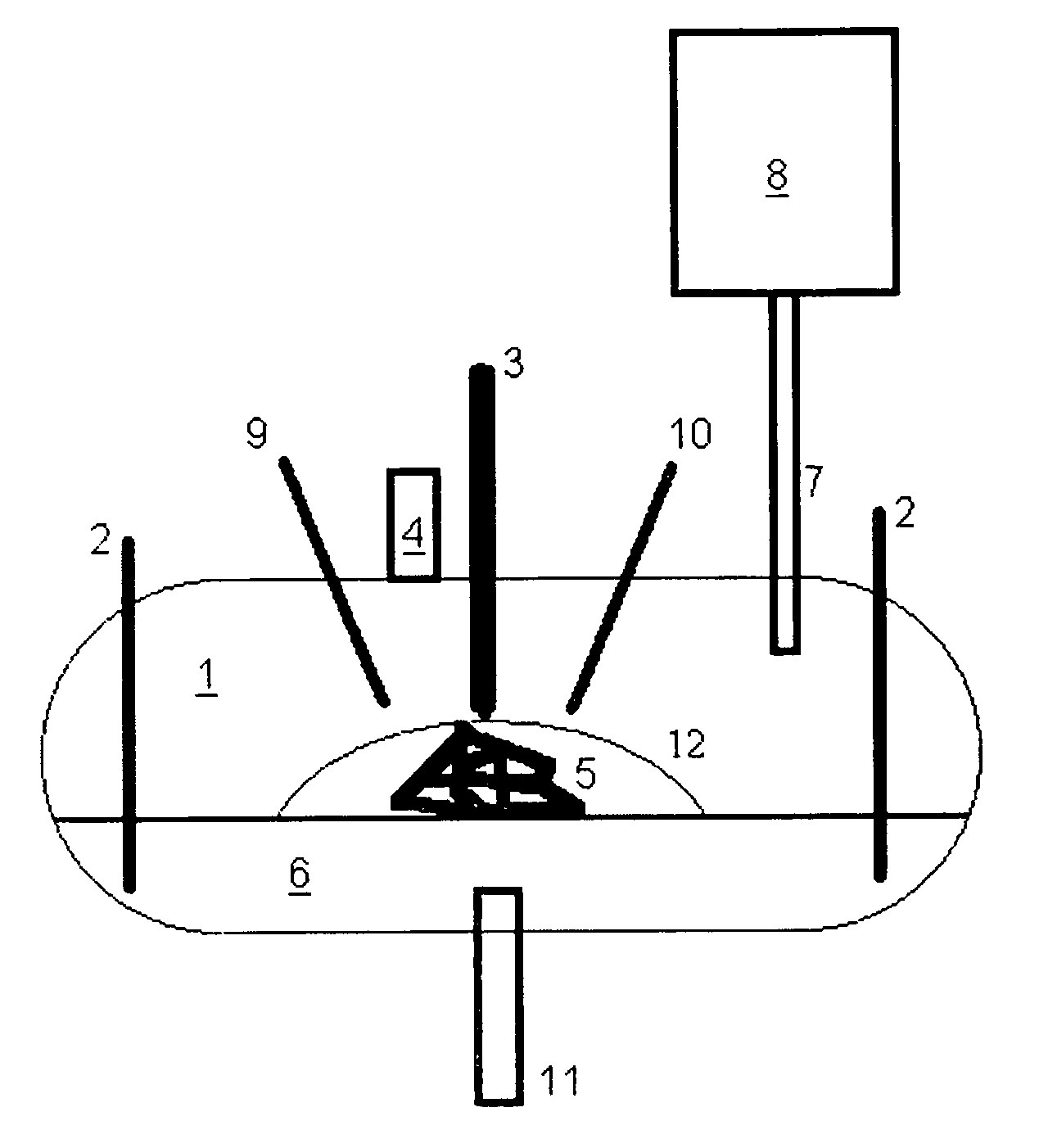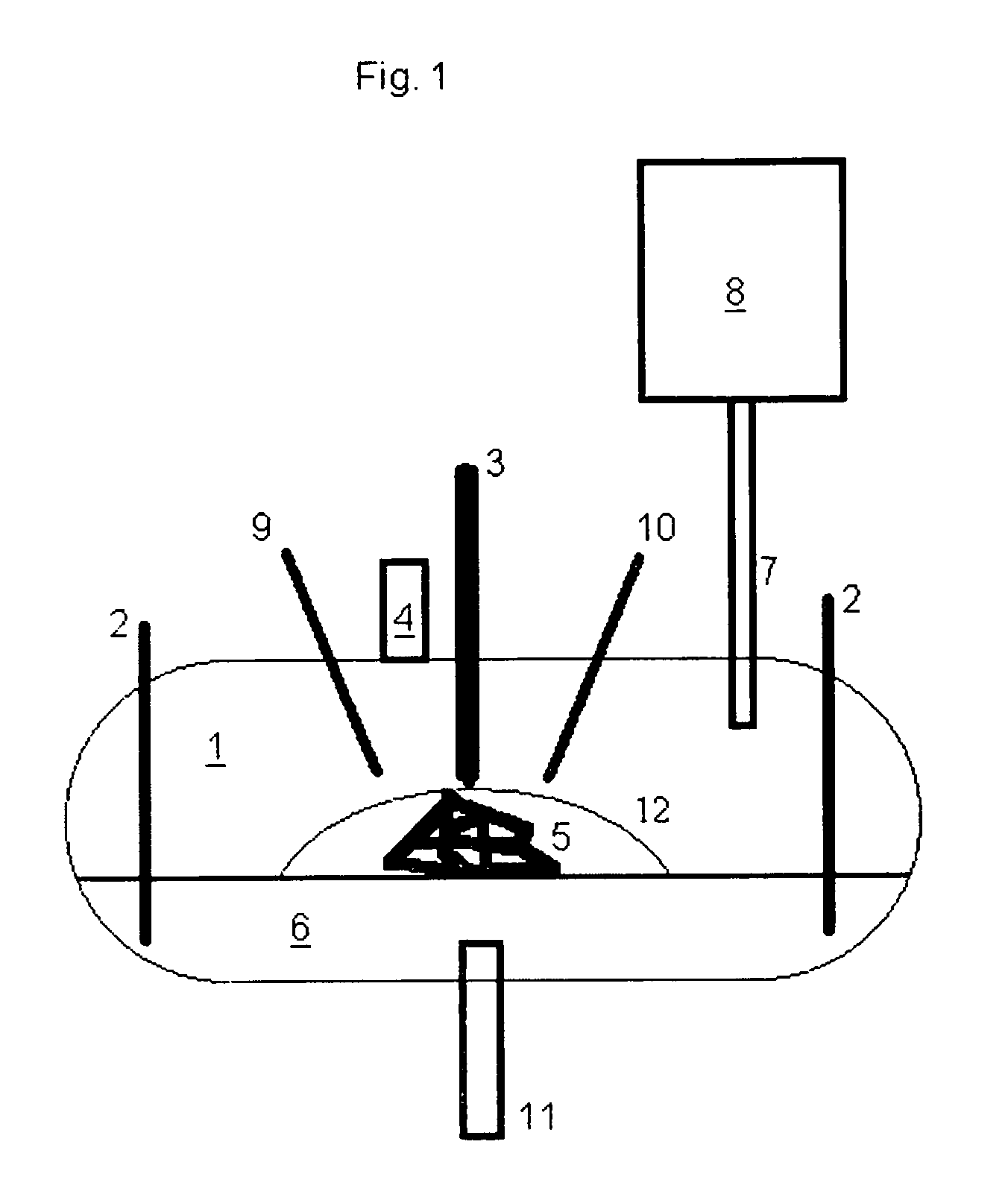Oxygen enhanced plasma waste treatment system and method
a waste treatment system and plasma technology, applied in the direction of lighting and heating apparatus, combustion process, combustion types, etc., can solve the problems of increasing offgas cleaning costs, s heating value is lost, and the waste of energy is often unreacted, so as to reduce the amount of carbon particulate matter, improve the efficiency of waste processing, and increase the energy content
- Summary
- Abstract
- Description
- Claims
- Application Information
AI Technical Summary
Benefits of technology
Problems solved by technology
Method used
Image
Examples
Embodiment Construction
[0007]A series of experiments were conducted to demonstrate the ability of the present invention to enhance the operation of a waste processing system. The specific system used in these experiments combines joule heating with plasma heating in a configuration described generally in U.S. Pat. No. 6,630,113, the entire contents of which are hereby incorporated by this reference. This system is manufactured by Integrated Environmental Technologies, LLC, (IET) of Richland Wash., and is known as a “Plasma Enhanced Melter™”, or PEM™ system. The system also included a “Thermal Residence Chamber” or TRC unit. Essentially, the TRC holds gas exiting the main processing chamber at an elevated temperature for a period of time sufficient to allow the completion of gas-phase reactions. The general arrangement of the PEM™ system used for these experiments is shown in FIG. 1. As shown in the figure, the PEM™ system includes a processing chamber 1 (shown in a cutaway view) having two or more joule 2...
PUM
 Login to View More
Login to View More Abstract
Description
Claims
Application Information
 Login to View More
Login to View More - R&D
- Intellectual Property
- Life Sciences
- Materials
- Tech Scout
- Unparalleled Data Quality
- Higher Quality Content
- 60% Fewer Hallucinations
Browse by: Latest US Patents, China's latest patents, Technical Efficacy Thesaurus, Application Domain, Technology Topic, Popular Technical Reports.
© 2025 PatSnap. All rights reserved.Legal|Privacy policy|Modern Slavery Act Transparency Statement|Sitemap|About US| Contact US: help@patsnap.com


